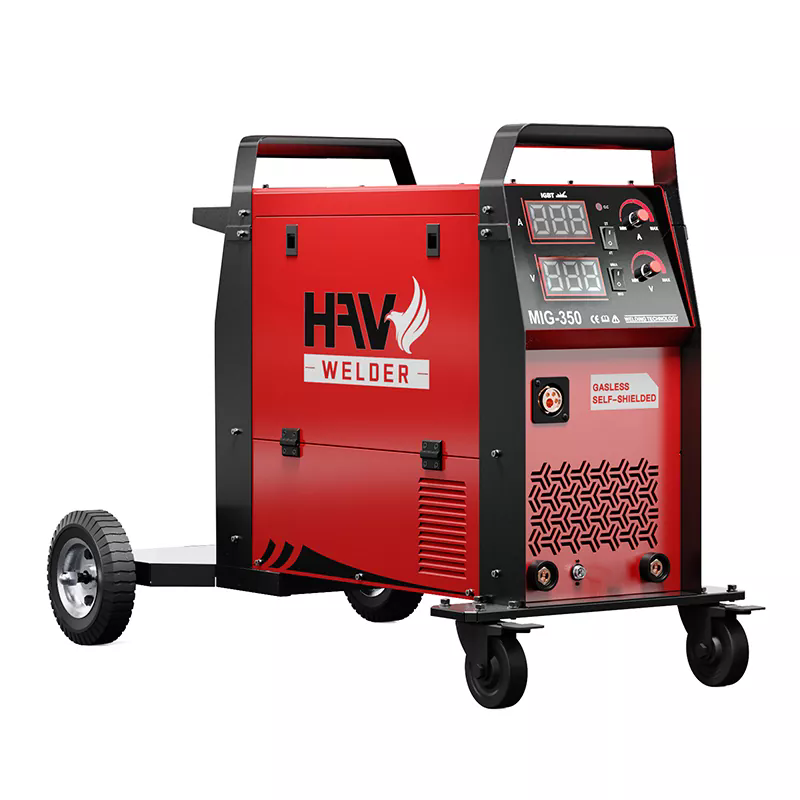Why Is a Welding Machine Essential for Modern Construction and Manufacturing?
2025-01-07
Welding is a fundamental process in the construction and manufacturing industries, playing a vital role in the creation of strong, durable structures and products. Whether it’s building bridges, crafting vehicles, or producing intricate metalworks, welding is integral to almost every sector that deals with metal. But in today’s fast-paced, efficiency-driven world, the question arises: Why is a welding machine essential for modern construction and manufacturing? In this blog, we will delve into the importance of welding machines, how they work, and why they are indispensable tools for professionals in various industries.
What Is a Welding Machine?
A welding machine is a device used to melt and fuse metal materials together using heat, pressure, or both. The welding machine generates the necessary heat to cause the metals to melt and form a bond. This is achieved through different types of welding processes, such as MIG welding (Metal Inert Gas), TIG welding (Tungsten Inert Gas), stick welding (Shielded Metal Arc Welding), and flux-cored arc welding (FCAW). The type of welding machine you choose depends on the materials being welded, the required strength of the joint, and the environment in which the work is being done.
Why Are Welding Machines Essential?
1. Strength and Durability of Joints:
The primary purpose of welding is to create strong, permanent joints between metal parts. A welding machine ensures that the metals are fused together securely, with minimal risk of failure. This is crucial in construction, automotive, and manufacturing industries, where the structural integrity of welded joints is essential for safety and performance. A welding machine allows for precise control over the welding process, ensuring the strength and durability of the final product.
2. Versatility and Application:
One of the main reasons welding machines are indispensable is their versatility. Welding machines can be used on a variety of metals, including steel, aluminum, copper, and brass. They are also used in multiple industries, from building large infrastructure projects to creating intricate parts for machinery. Whether you're constructing skyscrapers, manufacturing aircraft components, or repairing pipelines, a welding machine is essential for a wide range of applications.
3. Cost-Effectiveness:
Welding machines can significantly reduce production costs. By enabling the welding of metal parts directly, they eliminate the need for more expensive joining methods like riveting or bolting, which require additional materials and labor. Welding also minimizes waste, as it involves joining metal parts seamlessly without the need for excess material. In large-scale manufacturing, this cost-saving potential can be substantial.
4. Increased Speed and Efficiency:
Modern welding machines are designed to be fast and efficient, allowing workers to complete jobs in less time. With advancements in technology, welding machines can now automate many aspects of the process, improving the speed and consistency of welding operations. This is particularly valuable in mass production settings, where time is a critical factor. Welding machines enable high-output production without compromising on quality, helping businesses meet tight deadlines and maintain profitability.
5. Precision and Quality Control:
High-quality welds are critical for the structural integrity and safety of any construction or manufacturing project. Welding machines offer precise control over the welding process, allowing for consistent results with minimal defects. They also offer adjustable settings for heat, speed, and pressure, ensuring that the welding process is optimized for each specific material. This precision helps minimize mistakes, reduce rework, and ensure that the final product meets the required specifications.
6. Safety and Ease of Use:
While welding can be a dangerous process, modern welding machines are designed with safety in mind. Features like automatic shut-off mechanisms, thermal overload protection, and easy-to-use controls have made welding machines safer for operators. Additionally, the development of advanced welding techniques, such as robotic welding, has further reduced the risk of injury by allowing machines to perform complex welding tasks with minimal human intervention.
7. Adaptability for Various Welding Processes:
Welding machines come in a range of models suited for different types of welding processes. Some machines are designed for MIG welding, where the welder feeds a continuous wire into the weld pool, while others are more suited for TIG welding, which uses a non-consumable tungsten electrode to create the weld. There are also machines designed for arc welding, where an electric arc is used to melt the metal. The adaptability of welding machines ensures that professionals can choose the right machine for the specific requirements of their project.
Types of Welding Machines
Welding machines are designed to meet a variety of needs, and each type offers unique features that suit specific welding tasks. The most common types of welding machines include:
1. MIG Welding Machines (Metal Inert Gas):
MIG welding machines are among the most common for general fabrication. They are used to weld both thin and thick metal pieces, making them suitable for a wide range of applications, from automotive repairs to heavy-duty industrial work. MIG welding machines use a continuous wire feed, making them ideal for fast, efficient work. They are popular due to their ease of use and the cleaner welds they produce.
2. TIG Welding Machines (Tungsten Inert Gas):
TIG welding machines are designed for high-precision work, and they are often used for welding thin metals or materials that require a clean, high-quality finish. Unlike MIG welding, TIG welding uses a non-consumable tungsten electrode, and the welder manually feeds the filler material. TIG welding is ideal for applications where the appearance of the weld is important, such as in the aerospace and automotive industries.
3. Stick Welding Machines (Shielded Metal Arc Welding - SMAW):
Stick welding is one of the oldest and most versatile welding processes, making it suitable for a variety of projects, including construction and repairs. Stick welding machines are popular for their portability and their ability to work with a variety of metals. They use an electrode that melts as it creates the weld, and while stick welding may produce more spatter than other processes, it is known for its robustness in difficult environments.
4. Plasma Arc Welding Machines:
Plasma arc welding machines are highly specialized and ideal for high-precision welding tasks. This method uses a plasma torch to create a high-temperature arc that melts the metal. Plasma welding is often used for thinner materials and provides a very clean and accurate weld.
5. Multi-Process Welding Machines:
For versatility, some welding machines are designed to handle multiple welding processes, including MIG, TIG, and Stick welding. These multi-process machines are perfect for shops that need the flexibility to tackle a wide range of welding tasks without having to invest in separate machines for each process.
How to Choose the Right Welding Machine?
Choosing the right welding machine depends on several factors, including the type of material being welded, the required precision, and the nature of the project. Here are a few things to consider:
1. Type of Welding Required:
Depending on whether you need a strong, fast weld or a high-precision finish, different machines will offer different advantages.
2. Portability:
For fieldwork or repairs in remote locations, portable welding machines may be necessary.
3. Power Supply:
Consider the power source—some welding machines require specific types of electricity or even generators to function effectively.
4. Cost:
Welding machines come at various price points, from budget-friendly models to high-end industrial machines. Consider the long-term costs, including maintenance and consumables, when making a decision.
Conclusion: The Backbone of Modern Manufacturing and Construction
In conclusion, a welding machine is not just an accessory; it is a cornerstone of modern construction and manufacturing. Whether you are building bridges, fabricating car parts, or welding pipes in a factory, the welding machine enables professionals to produce strong, durable, and reliable metal structures. It improves efficiency, ensures high-quality work, and reduces overall production costs. As technology continues to evolve, the role of the welding machine will only become more essential, driving the continued advancement of industries worldwide.



